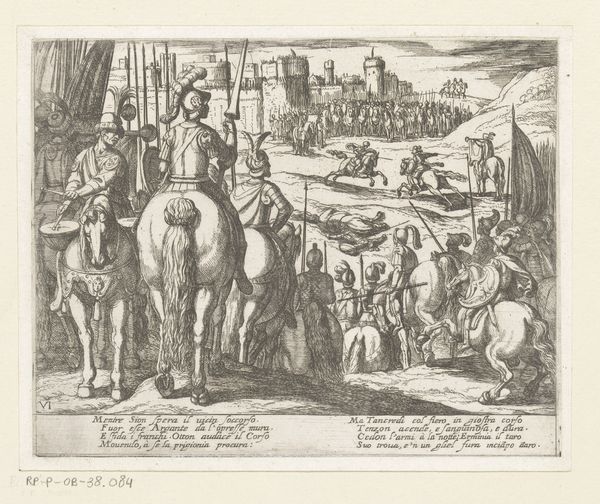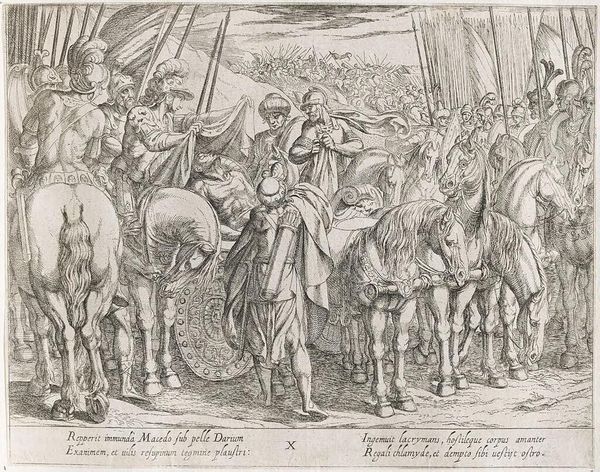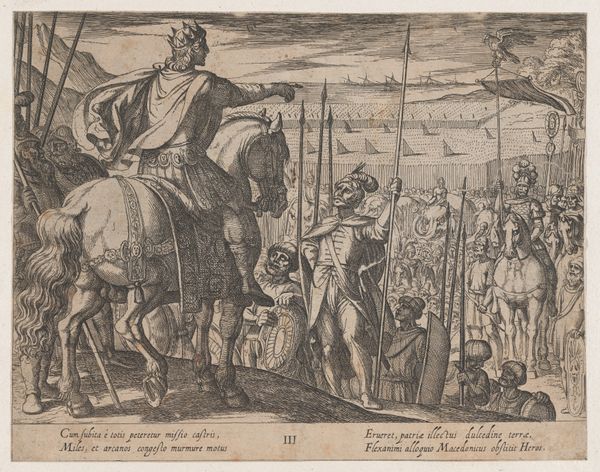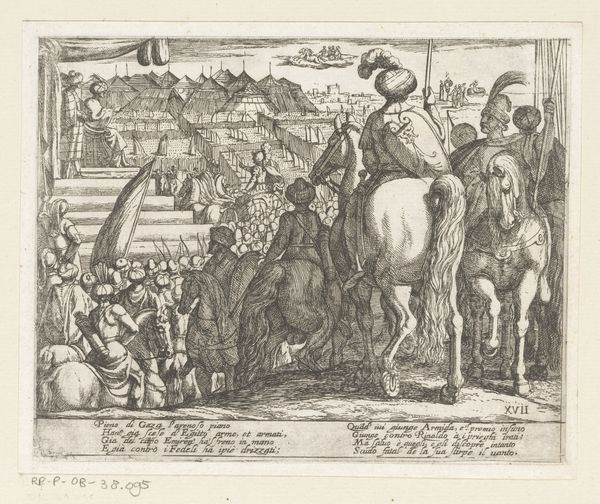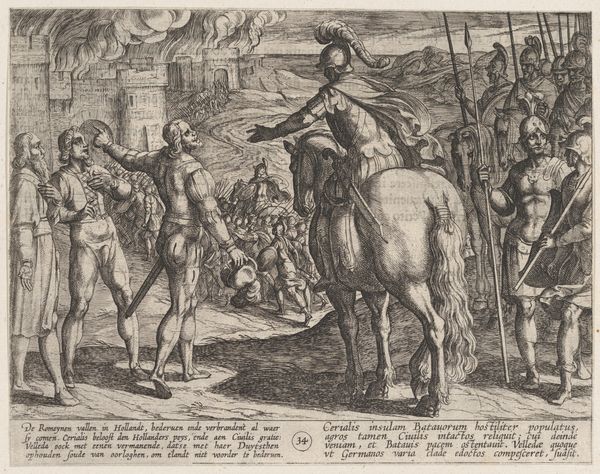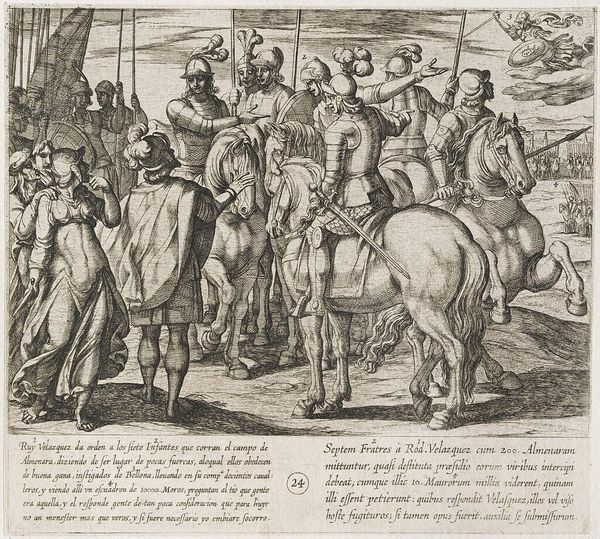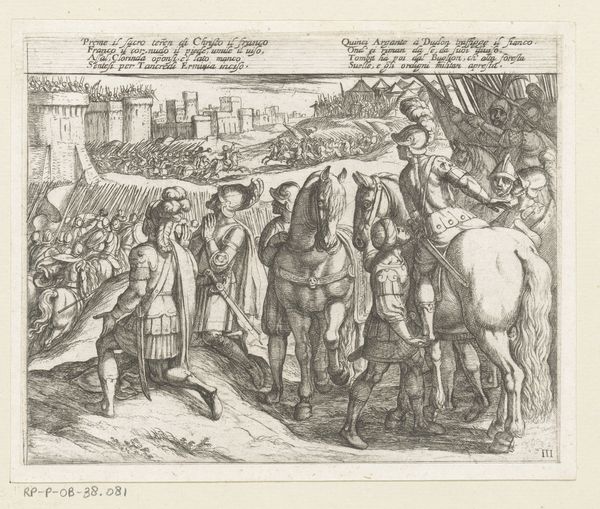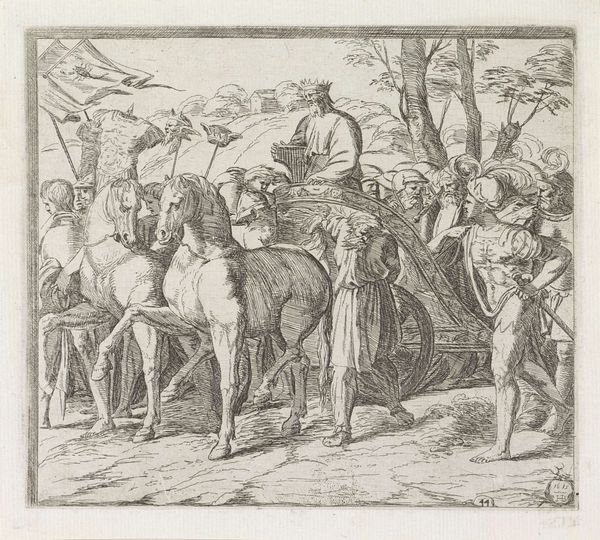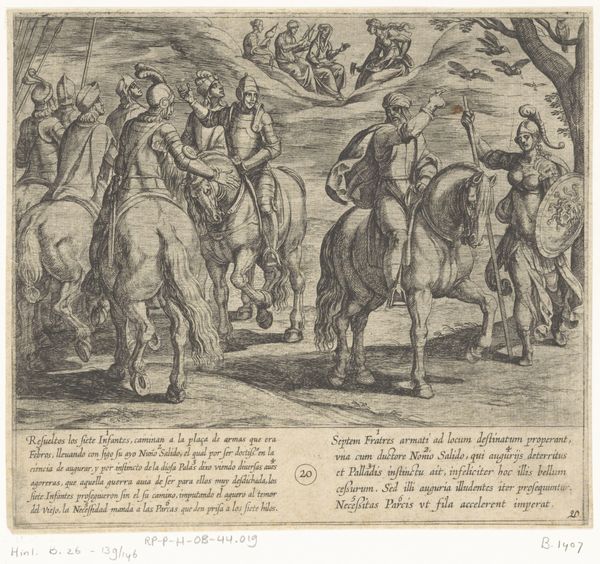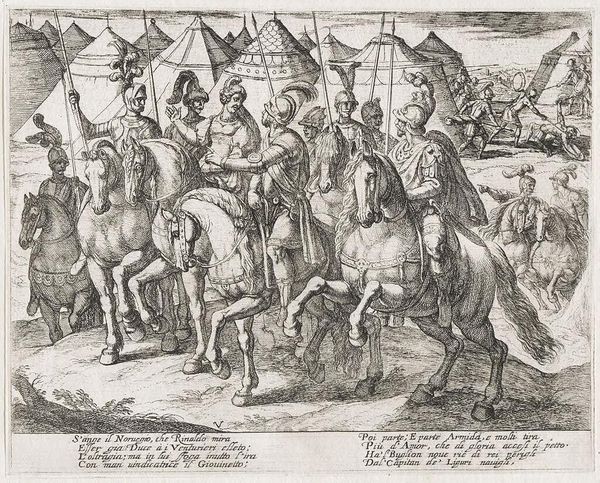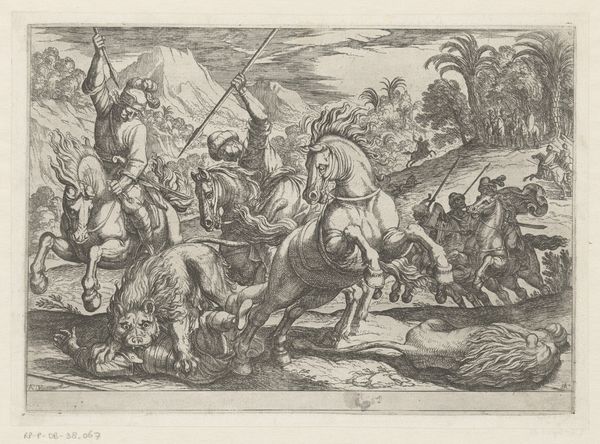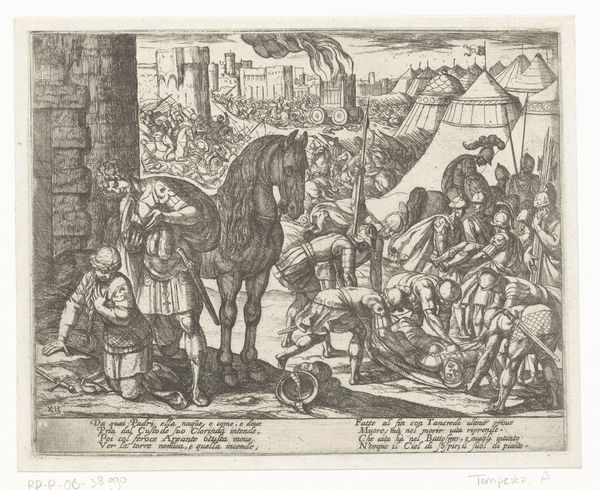
Plate 10: Alexander Finding the Body of Darius, from The Deeds of Alexander the Great, 1608
0:00
0:00
drawing, print, engraving
#
drawing
#
ink drawing
# print
#
mannerism
#
soldier
#
ancient-mediterranean
#
horse
#
men
#
history-painting
#
engraving
Dimensions: Sheet: 8 11/16 × 11 1/8 in. (22.1 × 28.3 cm)
Copyright: Public Domain
Editor: We’re looking at Antonio Tempesta's "Plate 10: Alexander Finding the Body of Darius, from The Deeds of Alexander the Great," made in 1608. It's an engraving. The density of figures and details creates such a dramatic effect. What catches your eye most about its composition? Curator: The intricacy of line is indeed compelling. Note how Tempesta manipulates the burin to create a hierarchy of forms through tonal variation. Consider the receding background, achieved with increasingly fainter and more closely spaced lines, a visual strategy for depth. Observe how orthogonals converge just above the horizon line. Editor: So the lines aren't just descriptive, they're doing a lot of spatial work too. How does this connect with its Mannerist style? Curator: Precisely. Mannerism delights in artifice and complexity. Tempesta shatters classical ideals of balance, packing the composition, utilizing disegno and figura serpentinata. Do you see the purposeful imbalance contributing to a sense of unease? Editor: I do, now that you mention it! It feels like everything's fighting for space. Curator: Precisely. The dynamism is key, activating the entire picture plane, as is characteristic for the period. And notice the engraving, its use to create light and dark within a relatively shallow space, directing our focus in a deliberate manner. Editor: I had been so focused on the details, I missed that the density of line itself created a particular effect. Thanks! Curator: And I found your observations on detail especially compelling, drawing me into the narrative anew.
Comments
No comments
Be the first to comment and join the conversation on the ultimate creative platform.
